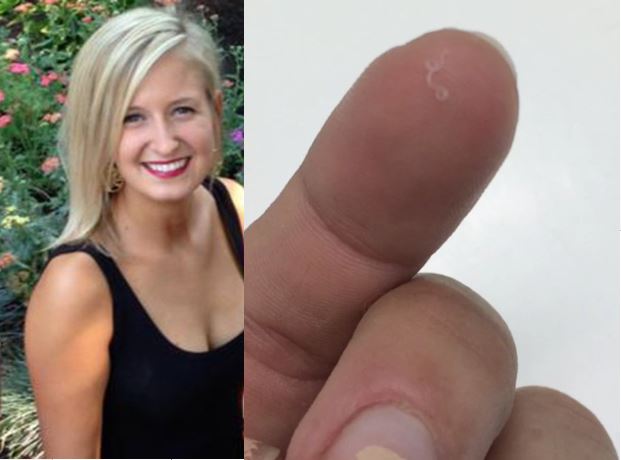A woman has made medical history after she pulled out a translucent warm from her eye, making her the first person in the world to suffer an eye infestation of a worm species previously seen only in cattle.
Abby Beckley had been working on a salmon fishing boat in Alaska, US when she first noticed a problem with her eye. Her eye was irritated and she was suffering from a migraine. After five days she returned to port where she used a mirror to examine the problem which she assumed might have been an errant eyelash, but when she dipped her hand in her eye, what she pulled out was a tiny, translucent worm.
“I looked at it, and it was moving,” she told CNN. “And then it died within about five seconds.”
The woman didn’t know it at the time but she had made medical history. American scientists on Monday revealed she had become the first person in the world to suffer an eye infestation of a worm species previously seen only in cattle that is spread by flies that feed on eyeball lubrication.
US Centres for Disease Control and Prevention scientists said 14 translucent parasitic worms of the species Thelazia gulosa, all less than half an inch (1.27 cm) long, were extracted from the 26-year-old woman’s eye over a 20-day period before her symptoms dissipated.

“Cases of eye worm parasitic infections are rare in the USA, and this case turned out to be a species of the Thelazia that had never been reported in humans,” said Richard Bradbury, the study’s lead author who works with the CDC’s Division of Parasitic Diseases and Malaria.
This species of Thelazia worm was previously seen in cattle throughout the northern United States and southern Canada, the researchers reported in a study published in the American Journal of Tropical Medicine and Hygiene. They said the study indicates that North Americans may be more vulnerable than previously understood to such infections.
If the worms remain in a person’s eye for a prolonged time, they can cause corneal scarring and even blindness, according to the researchers.





















